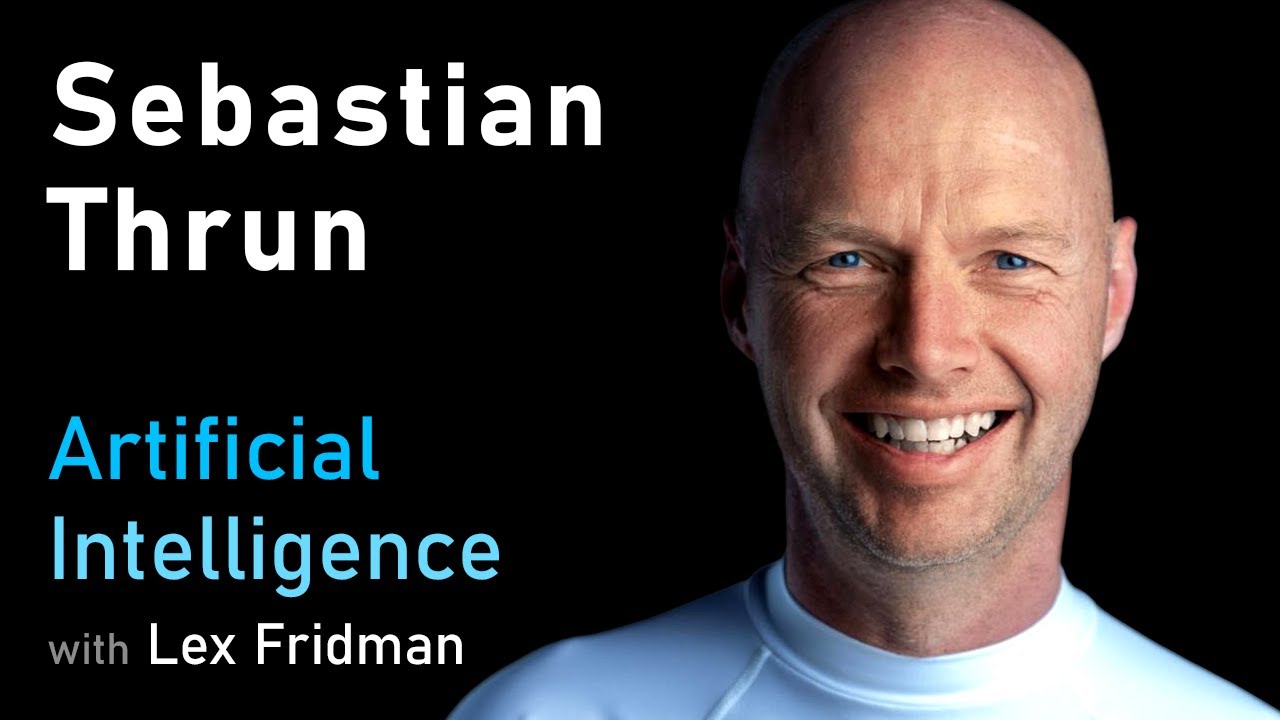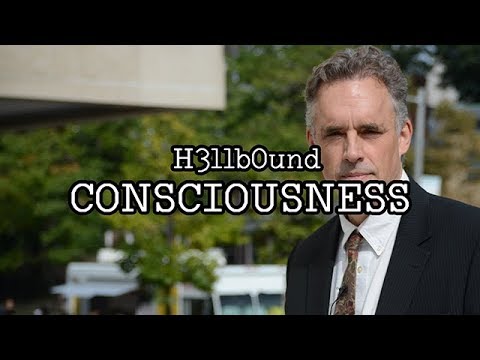Lex Fridman
Sebastian Thrun is one of the greatest roboticists, computer scientists, and educators of our time. He led development of the autonomous vehicles at Stanford that won the 2005 DARPA Grand Challenge and placed second in the 2007 DARPA Urban Challenge. He then led the Google self-driving car program which launched the self-driving revolution. He taught the popular Stanford course on Artificial Intelligence in 2011 which was one of the first MOOCs. That experience led him to co-found Udacity, an online education platform. He is also the CEO of Kitty Hawk, a company working on building flying cars or more technically eVTOLS which stands for electric vertical take-off and landing aircraft. This conversation is part of the Artificial Intelligence podcast.
This episode is presented by Cash App: download it & use code “LexPodcast”:
Cash App (App Store): https://apple.co/2sPrUHe
Cash App (Google Play): https://bit.ly/2MlvP5w
INFO:
Podcast website:
https://lexfridman.com/ai
Apple Podcasts:
https://apple.co/2lwqZIr
Spotify:
https://spoti.fi/2nEwCF8
RSS:
https://lexfridman.com/category/ai/feed/
Full episodes playlist:
https://www.youtube.com/playlist?list=PLrAXtmErZgOdP_8GztsuKi9nrraNbKKp4
Clips playlist:
https://www.youtube.com/playlist?list=PLrAXtmErZgOeciFP3CBCIEElOJeitOr41
EPISODE LINKS:
Sebastian Twitter: https://twitter.com/sebastianthrun
Udacity: https://www.udacity.com/
Kitty Hawk: https://kittyhawk.aero/
OUTLINE:
0:00 – Introduction
3:24 – The Matrix
4:39 – Predicting the future 30+ years ago
6:14 – Machine learning and expert systems
9:18 – How to pick what ideas to work on
11:27 – DARPA Grand Challenges
17:33 – What does it take to be a good leader?
23:44 – Autonomous vehicles
38:42 – Waymo and Tesla Autopilot
42:11 – Self-Driving Car Nanodegree
47:29 – Machine learning
51:10 – AI in medical applications
54:06 – AI-related job loss and education
57:51 – Teaching soft skills
1:00:13 – Kitty Hawk and flying cars
1:08:22 – Love and AI
1:13:12 – Life
CONNECT:
– Subscribe to this YouTube channel
– Twitter: https://twitter.com/lexfridman
– LinkedIn: https://www.linkedin.com/in/lexfridman
– Facebook: https://www.facebook.com/lexfridman
– Instagram: https://www.instagram.com/lexfridman
– Medium: https://medium.com/@lexfridman
– Support on Patreon: https://www.patreon.com/lexfridman
Source




I really enjoyed this conversation with Sebastian. Here's the outline:
0:00 – Introduction
3:24 – The Matrix
4:39 – Predicting the future 30+ years ago
6:14 – Machine learning and expert systems
9:18 – How to pick what ideas to work on
11:27 – DARPA Grand Challenges
17:33 – What does it take to be a good leader?
23:44 – Autonomous vehicles
38:42 – Waymo and Tesla Autopilot
42:11 – Self-Driving Car Nanodegree
47:29 – Machine learning
51:10 – AI in medical applications
54:06 – AI-related job loss and education
57:51 – Teaching soft skills
1:00:13 – Kitty Hawk and flying cars
1:08:22 – Love and AI
1:13:12 – Life
AMAZING! THANK YOU SO MUCH!
I think, if we can make a self driving car work in India, it should work everywhere else. I think the rules are violated the most in India than anywhere else.
1) There are hardly any lane markings (or they have faded away)
2) Hardly any of the signals work properly (poorly maintained)
3) The roads are hardly maintained so potholes almost throughout
4) Drivers hardly follow rules, haphazardly crossing lanes and not stopping at signals most of the time
5) Drunken and/ or rash drivers overtaking by scaring others
6) Deadlocks on roads where no driver cooperates with another (especially in Bangalore city)
7) Pedestrians crossing road stopping fast moving vehicles and without any signals
8) Speed limits are arbitrary and too low for a given road (un reasonable and someone is stopped for not driving at 40 km/h on an empty 4 lane road is weird)
9) Small vehicle drivers (scooters, bikes, …) bringing their vehicles at the front and not allowing passage on busy road
10) Broken vehicles jamming traffic
11) Vehicles appearing on wrong side (because it seems to be a shortcut to reach other roads) arbitrarily
12) Road repairs and constructions at arbitrary places which results in finding alternative (non maintained and muddy) roads resulting in huge jams
13) Angry people (mostly!) yelling at you (first) for their mistakes on roads.
In this chaos, if self driving cars are tested in India, then they are safe everywhere else I guess (most probably).
If you are interested to artifical inteligence, this link is for you
https://www.youtube.com/watch?v=YriE6NNcCds
What !? Germany didn't deserve what Europe and the Americans did to it in WW2? Right.
THis guy is cool.
Thanks Lex… your work is greatly appreciated.
To your question "You don't know what you don't know… so how can you build a system to learn of things that we can't even imagine".
Within a learning system you do know what you can sense and the degrees of variation… you know that it must be able to parse and accurately relate the key similarities and uniqueness of the sensory map (along with other neurological mappings) to an existing neural network. From there, with this as a perspective the context and logic of the theories represented by those neurological mappings are the variable that their sensory and neurological distinction gives definition to.
This is a close as I come to framing the mechanics of general intelligence.
Thanks.
Thank you Lex, just big big thank you!
lives are 'saved' by greater food production or more mouths are born to feed? oh and then all that about education and slipping the race angle on it for good measure. Maybe change his name to Thundberg anyone? When great minds such as these get mind-virused into virtue-signalling at every turn in the conversation it's game over.
btw, did u miss the bit about where you are going to put those 7 billion cars in the sky ( ''..i so hate traffic..'' ) or was it nicely swept away ..?
"My shit moves at the speed of flushing water so that makes me superhuman" – Sebastian Thrun
Wonderful my dear man.
What was that philosophy book he recommended towards the end?
20:50 "we judge ourselves by our intentions and others by their actions." That reminds me of the Fundamental Attribution Error: "I did a bad thing because <REASONS>, but you did it because you're a jerk." The FAE is one of the most profound cognitive biases (read the list on Wikipedia). What is Thrun's friend's name ("Axota"?), and does his insight have a name?
This is fascinating , oh my goodness
1:13:00 don't worry Mr.Thrun, we're working on such humanoid robot for precision agriculture.
His EI makes him the great lead scientist he is !
Lex I couldn't resist any longer your wonderful interviews with so many intelligent and warm human beings including Sebastian Thrun has left me with no other option than to subscribe to this wonderful channel.
It’s a true pleasure to have such a smart person like Lex interviewing the best people in the field asking not only the questions you can only ask in an privileged interview like this – such as What approach is better? Tesla or Waymo in terms of pursuit for innovation or Sensor suite? – but also „philosophical“, leadership and personal questions which gives you so much insight not only in the success but also the character of the interviewee. Thank you for the amazing insights and for making it so much fun to watch!
as always: very good Interview. thanks Lex.
Great interview! I think the optimism is very welcome. I'd love to share the same optimism, but I can't help also seeing "other aspects" of our exuberance that we can fix everything with more technology (as opposed to being conscience with what damage we are potentially causing). For example: The invention of fixing nitrogen and creating fertilisers at scale by Carl Bosch is in itself a good one. However, now agricultural N2O and CO2 emissions are rising. The N2O alone is causing 6% of total global warming. To make fertilisers, a lot of fossil energy us used and CO2 is emitted. Ecosystems are disrupted and the nitrites and nitrates cause health problems because they leach into our environment. Sorry to go off topic, but my point is that the beneficial effect of a technology is hard to predict and never purely good (or purely bad).
The economic imperative (more growth is good) and technologic imperatives are what are causing the greatest problems of our times. I think that the question should be: how do we agree on a world that we want in the future, because we already have the technology and wealth required to make that world possible, it's just not applied in the right way at this point in time.
Inspiring. Thanks guys.
"Just ask your grandmother" (Thrun) – Innovation could be so easy.
Smart technologies ''AI'' like self-driving cars, aircraft ect make it easier for selective elimination of individuals. Just blame it on corrupted programming.
Thanks lex this was interesting and instructive
As lover of self piloting machine, I'm glad to live the world these 2 greatest minds exist. Being great frontier is hard. Being great teacher is hard. The combination is Poisson distribution. God bless you guys.
Big fan of Professor Thrun. But towards the end he mentions a fact that nitrogen based chemical fertilizers increased yield by 26 times, based on Steven Pinker's claim. This fact is nowhere to be found.
Hi Lex, I have been listening a lot of your podcasts these days and I enjoy a lot. Thank you for getting all the interviews with these great guests.
17:40 Is sebastian being serious? i can't really tell ???? :O
11:02 That! As a cyclist I have noticed that for years and years, and found it unbelievable that nobody else saw it. As if it was the most normal thing to have a car sitting (or two) before every house. Insanity!
19:45 ff is just great
Hey Lex,/Sebastian, great talk. If you are interested in a briefer on VR/XR feel free to join me in the rift. I am a tech advisor to the cold north and starting a STEM environment called the Apollo lounge. The potential for meeting and learning and building is expansive… standing on the shoulders of Giants, to be given freely (at the price of electricity). I am looking to build schools. Grab an Oculus Quest and add me, ApolloAgain, I can show you around. (Seb I think you should move your school there too 😉 Cheers.
Imagine if ATC could send text messages to aicrafts, so futuristic! Well no, welcome to 1978: https://en.wikipedia.org/wiki/ACARS
I am wondering if any of the single points of failures mentioned by Thrun at 1:02:04 was responsible for Kobe’s death. If so, I hope EVTOLS arrive ASAP even without autonomous flying. It’s kinda ridiculous to rely on machines with flawed fundamental design
I was going to apply to be a KittyHawk test pilot, and I may still do so. The problem with the KittyHawk design: f all the battery packs are packed together in one area, and one LiPo battery pack spontaneously combusts and catches fire, it sets off a chain reaction and they all catch fire and explode. And then you are going down, whether you have 8 redundant motors or not. Even if your battery packs are stored in an outboard nacel, and you got at least two separate areas where battery packs are densely located… one exploding and catching on fire creates a serious problem for you as a pilot.
Your best bet may be to locate the packs individually as far away from each other and the pilot as possible (dispersed), and away from structural or motor members, so if any one catches fire, it will be localized and contained, and won't bring down the entire craft.
Choppergirl.air-war.org
It's always great to listen to Sebastian Thrun, he's a hero of mine and imo an example for leading what philosophers call a 'good life'
But this talk with Fridman was just absolutely excellent. Thank you both
This is fantastic !
Love the way he looks at things, life, love, technology… beautiful.
put wheels to make them hybrid flying cars
That was beautiful! Thank you